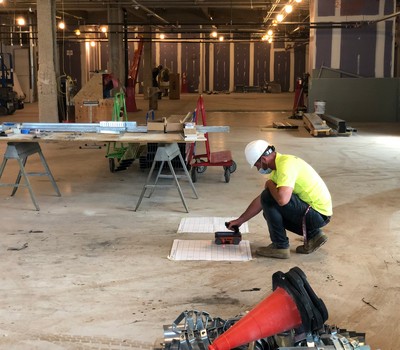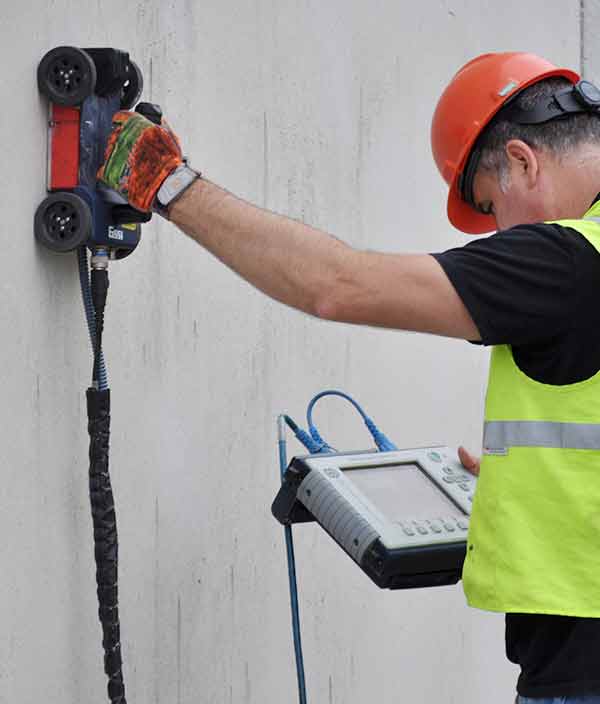Unveil the Transformative Power of Concrete Scanning in Optimizing Effectiveness and Security
Concrete scanning has become an essential tool in the building and construction sector, providing exceptional benefits in enhancing job efficiency and ensuring security standards. By using advanced innovation, concrete scanning allows specialists to see beyond the surface area, discovering hidden complexities that might influence the structural integrity of a structure. The transformative power of concrete scanning hinges on its capability to provide comprehensive understandings and real-time information, reinventing how jobs are intended and carried out. As we explore the complexities of this cutting-edge technique, a world of possibilities opens, showcasing a brand-new era of building techniques that prioritize precision and safety.
Value of Concrete Scanning
Ensuring the structural integrity and safety and security of building projects starts with the critical step of carrying out thorough concrete scanning. Concrete scanning is a non-destructive technique used to find and map subsurface components within concrete frameworks.
Additionally, concrete scanning helps in optimizing task timelines and spending plan by staying clear of unanticipated costs and hold-ups that might occur due to unexpected blockages within the concrete. Inevitably, investing in detailed concrete scanning is an aggressive technique that improves both effectiveness and safety and security in construction projects.
Just How Concrete Scanning Functions
Concrete scanning runs as a crucial tool in construction tasks by utilizing advanced modern technologies to detect and map subsurface aspects without causing structural damage. Ground Passing Through Radar (GPR) and Electromagnetic Induction (EMI) are 2 key methods used in concrete scanning.
During the scanning procedure, the information accumulated is examined in real-time, allowing instant identification of prospective hazards or barriers underneath the surface area. This details aids in decision-making, making sure that building tasks proceed securely and effectively. In addition, 3D imaging software application can be utilized to produce thorough maps of the subsurface elements, further improving project preparation and execution. By utilizing these sophisticated modern technologies, concrete scanning substantially reduces the danger of pricey problems and injuries on building websites.
Advantages of Concrete Scanning
Utilizing innovative scanning technologies in construction jobs uses a wide variety of benefits, boosting both performance and safety and security on-site. Among the main benefits of concrete scanning is the capability to identify and situate ingrained items such as rebar, post-tension cords, and conduits accurately. By recognizing these aspects before boring or cutting into concrete frameworks, the danger of unexpected strikes is substantially minimized, stopping prospective injuries to workers and damages to the structure itself. Concrete scanning assists in planning and making a lot more efficiently, as it offers precise details regarding the location and deepness of structural parts.

Study: Concrete Scanning Success

In one more case, a construction business made use of 3D concrete scanning to assess the condition of maturing concrete frameworks in a historic building. The in-depth scans given important understandings right into the extent of deterioration and helped focus on maintenance initiatives efficiently. By proactively resolving areas of issue determined via scanning, the firm had the ability to expand the lifespan of the structure my website and make sure owner safety.
These situation researches emphasize the transformative power of concrete scanning in boosting efficiency, accuracy, and safety and security in building projects.
Carrying Out Concrete Scanning in Projects
Carrying out innovative scanning modern technologies throughout building and construction tasks has actually come to be progressively vital for enhancing accuracy and safety and security. By incorporating concrete scanning right into task preparation and implementation, building teams can identify potential hazards, such as rebar or post-tension cable televisions, hidden within concrete structures. This positive method minimizes the risk of crashes, hold-ups, and expensive rework, inevitably leading to extra reliable job timelines and budget plans.
To execute concrete scanning successfully, task managers ought to collaborate very closely with knowledgeable scanning experts to identify the most ideal scanning methods for the particular project needs. Engaging scanning experts from the onset of a project makes it possible for the team to create thorough scanning plans that deal with key locations of issue and make certain thorough information collection.
Furthermore, incorporating concrete scanning into regular task process can improve decision-making procedures, as real-time scan information offers instant insights into the condition of concrete frameworks - Concrete Scanning. This data-driven method facilitates notified analytical and allows teams to make changes immediately, page fostering a society of efficiency and safety and security throughout the task lifecycle

Final Thought
In conclusion, concrete scanning plays an essential function in boosting efficiency and security in building and construction jobs. By making use of advanced technology to map and identify out underlying structures within concrete, this process assists to stop pricey blunders, ensure architectural stability, and lessen threats on website. With the ability to uncover covert components and offer precise data, concrete scanning confirms to be a valuable tool for optimizing project results and optimizing total success.
Concrete scanning is a non-destructive approach made use of to identify and map subsurface components within concrete frameworks. In addition, concrete scanning aids in maximizing task timelines and budget plan by preventing unforeseen prices and hold-ups that might emerge due to unpredicted blockages within the concrete. One notable case research study entails a massive restoration job where concrete scanning played a critical duty in making sure task success.In an additional instance, a construction company made use of 3D concrete scanning to examine the problem of maturing concrete structures in a historical structure. By integrating concrete scanning right into job preparation and implementation, building teams can recognize prospective risks, such as rebar or post-tension cables, concealed within concrete frameworks.